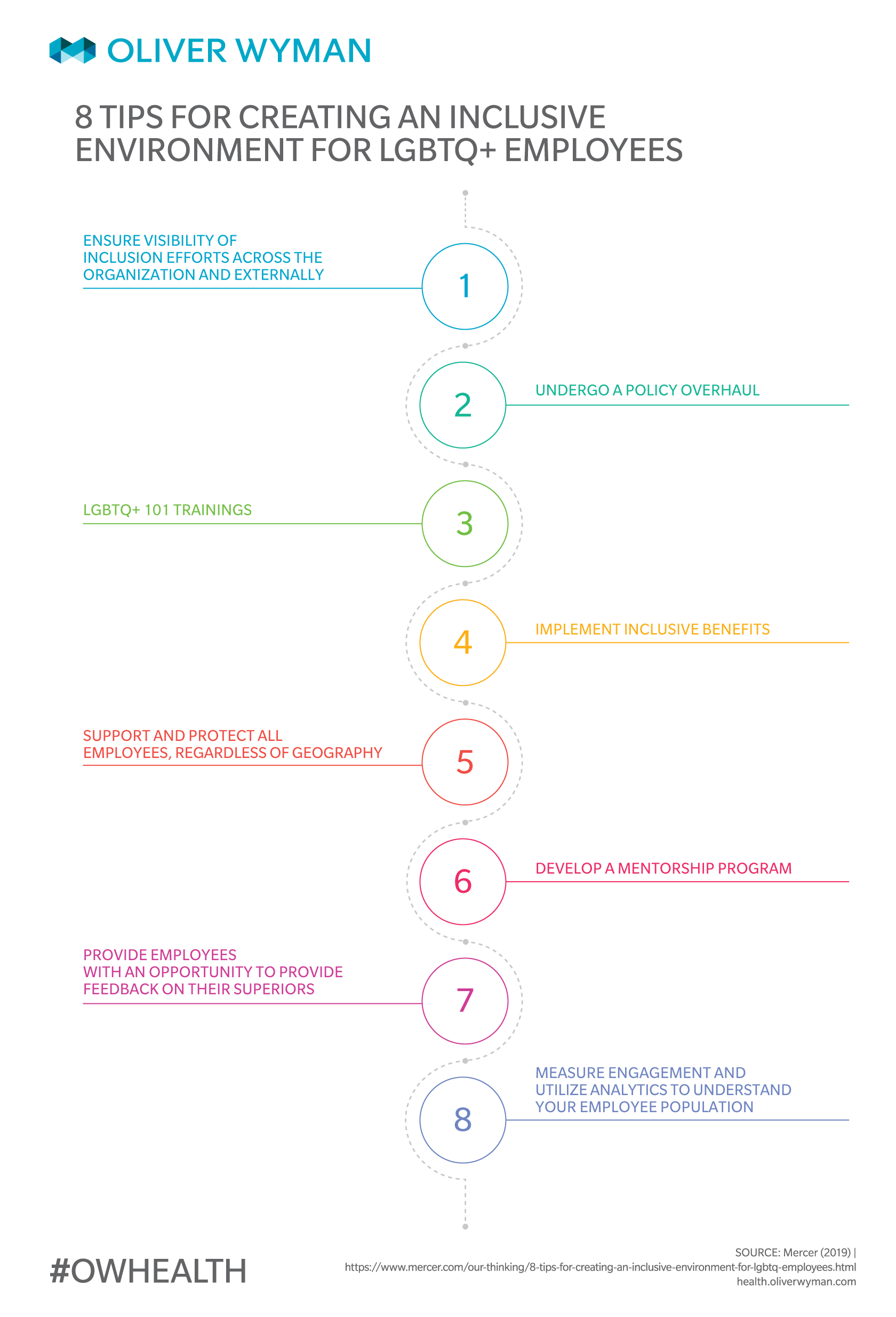Editor's Note: This article was initially published on Mercer.com.
Outside of setting up Employee Resource Groups, organizations often struggle to foster environments where all employees can thrive, particularly employees from underrepresented backgrounds. For LGBTQ+ people, the absence of vocal LGBTQ+ leadership leaves us wondering: is there a reason for this? Is hiding one’s sexual orientation and gender identity necessary to succeed in this environment? Do others like me leave the company because the environment is hostile?
So, what can your organization do to empower LGBTQ+ employees to feel comfortable bringing their whole selves to work? Here are eight tips:
- Ensure visibility of your inclusion efforts across the organization and externally. Send employee-wide communications about Pride Month. Participate in local Pride Marches. Put Pride flags around your offices throughout the year. Incorporate gender neutral restrooms into your facilities.
- Undergo a policy overhaul. Review your Human Resources policies to make sure they are free of references to gender. Make sure your equal opportunity statement explicitly calls out gender identity and sexual orientation.
- LGBTQ+ 101 Trainings. Make sure your employees, and particularly people managers and recruiters, are using the appropriate terminology when talking to their LGBTQ+ colleagues or potential candidates. For people managers, prepare them to address issues that LGBTQ+ direct reports may face, such as potential discrimination or choosing to transition if they are transgender.
- Implement inclusive benefits. Ensure same-sex parents have equitable parental leave opportunities, offer adoption and surrogacy benefits, and provide transgender employees with access to affordable treatment and mental health services. While this sounds complicated, Mercer leverages its experience working with medical insurance carriers and point solutions vendors to implement inclusive benefits for other organizations. Remember, the impact of these benefits can go beyond the LGBTQ+ community. For example, offering access to mental health services is a positive for all employees – according to Mercer’s 2018 Mental Health at Work report, 61 percent of employees have experienced mental health issues due to work or where work was a related factor.
- Support and protect all employees, regardless of geography. Many countries still don’t protect their LGBTQ+ employees from workplace discrimination, and in others, being LGBTQ+ is still criminalized. At Mercer, we are in the process of developing our “Within our Walls” or “WOW Guidelines”, which highlights the resources available to employees including our confidential e-mail address and tools that provide insights into risks for LGBTQ+ employees travelling to different countries.
- Develop a mentorship program. The absence of visible out LGBTQ+ leadership can create the perception that LGBTQ+ people cannot pave a long-term career within your organization. Ensuring access to mentors who are equipped with proper tools to help individuals from all backgrounds succeed does not only help LGBTQ+ employees, but any rising professional in your organization.
- Provide employees with an opportunity to provide feedback on their superiors. As a result of institutionalized bias, most organizations find it easier to attract diverse talent at the most junior levels. The challenge is to retain these individuals until they become leaders within your organization. By providing junior employees with the platform to voice their concerns, you can identify gaps in your leadership that may be driving underrepresented individuals out of the organization.
- Measure engagement and utilize analytics to understand your employee population. Many organizations have difficulty gauging the success of their Diversity & Inclusion initiatives because they do not effectively use analytics to measure the progress of policies and programs. This is often because they do not even collect the data necessary to perform such analyses.


